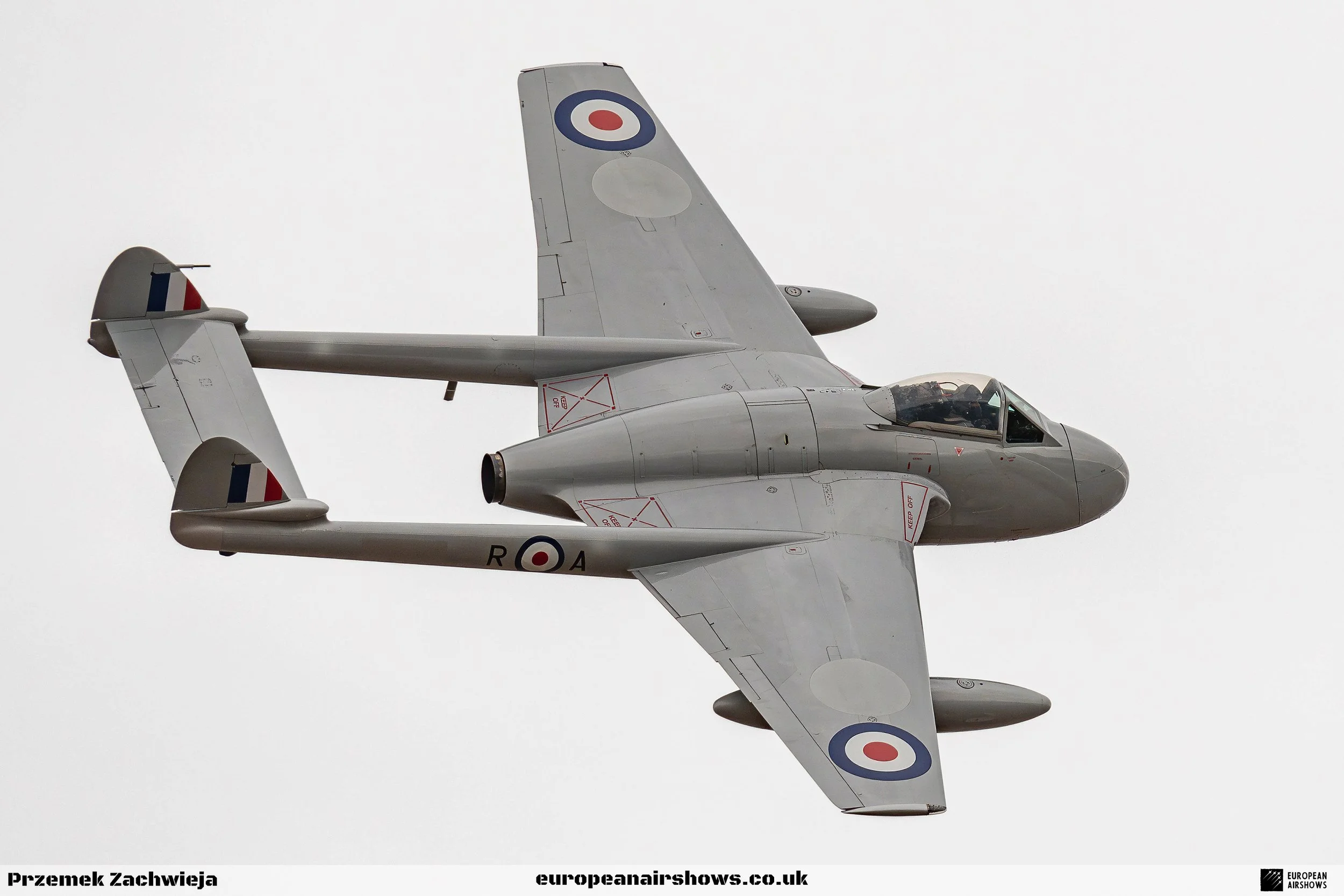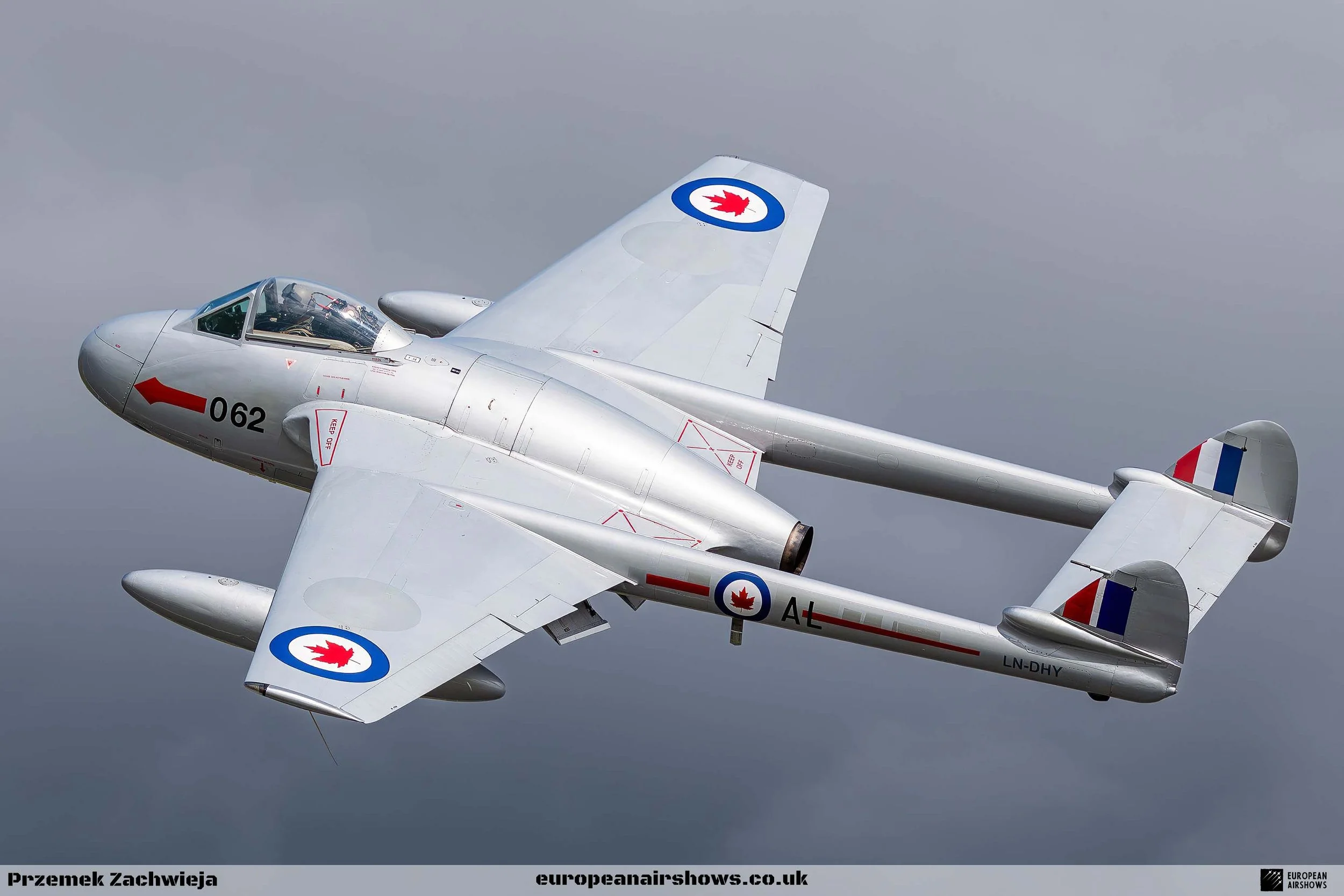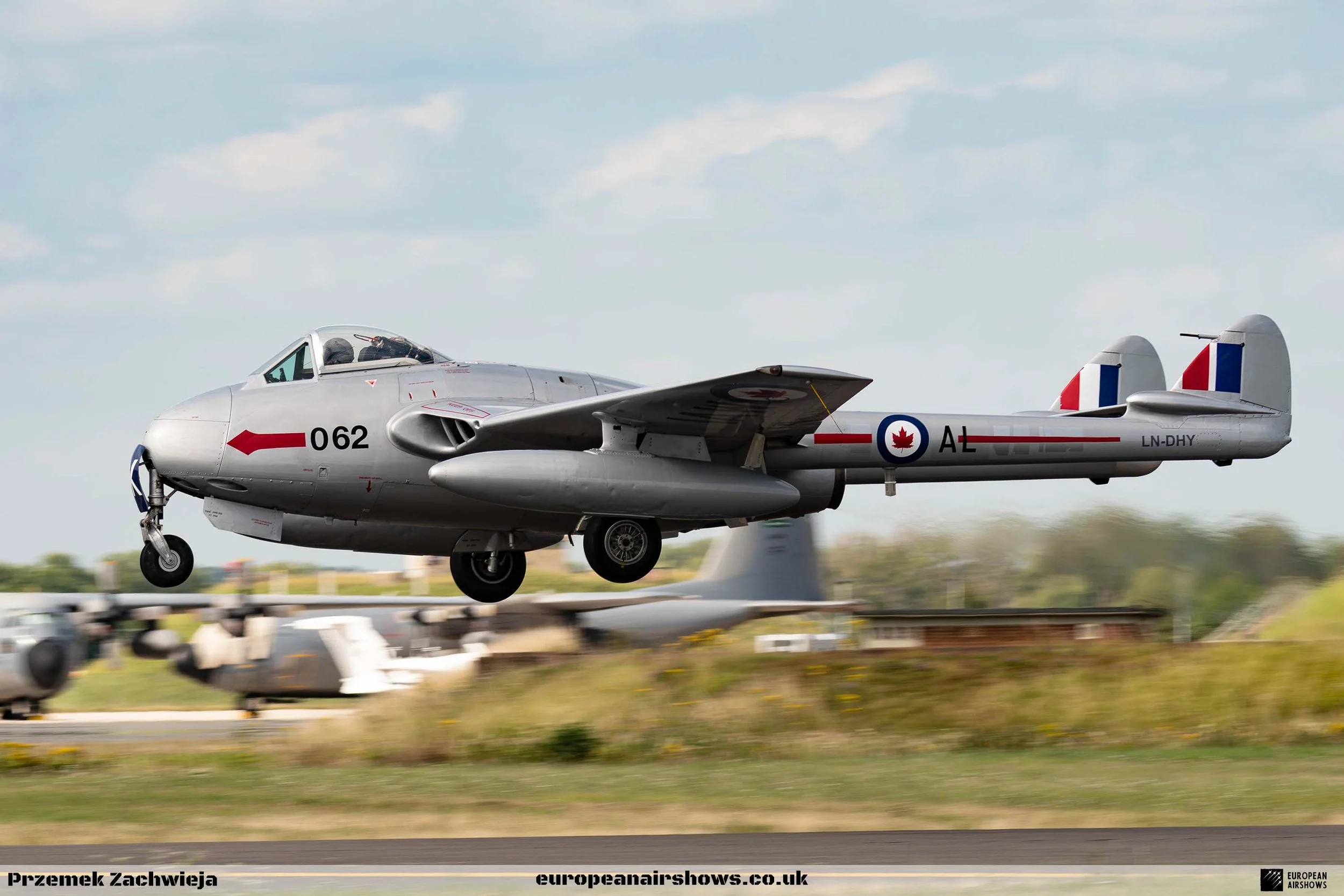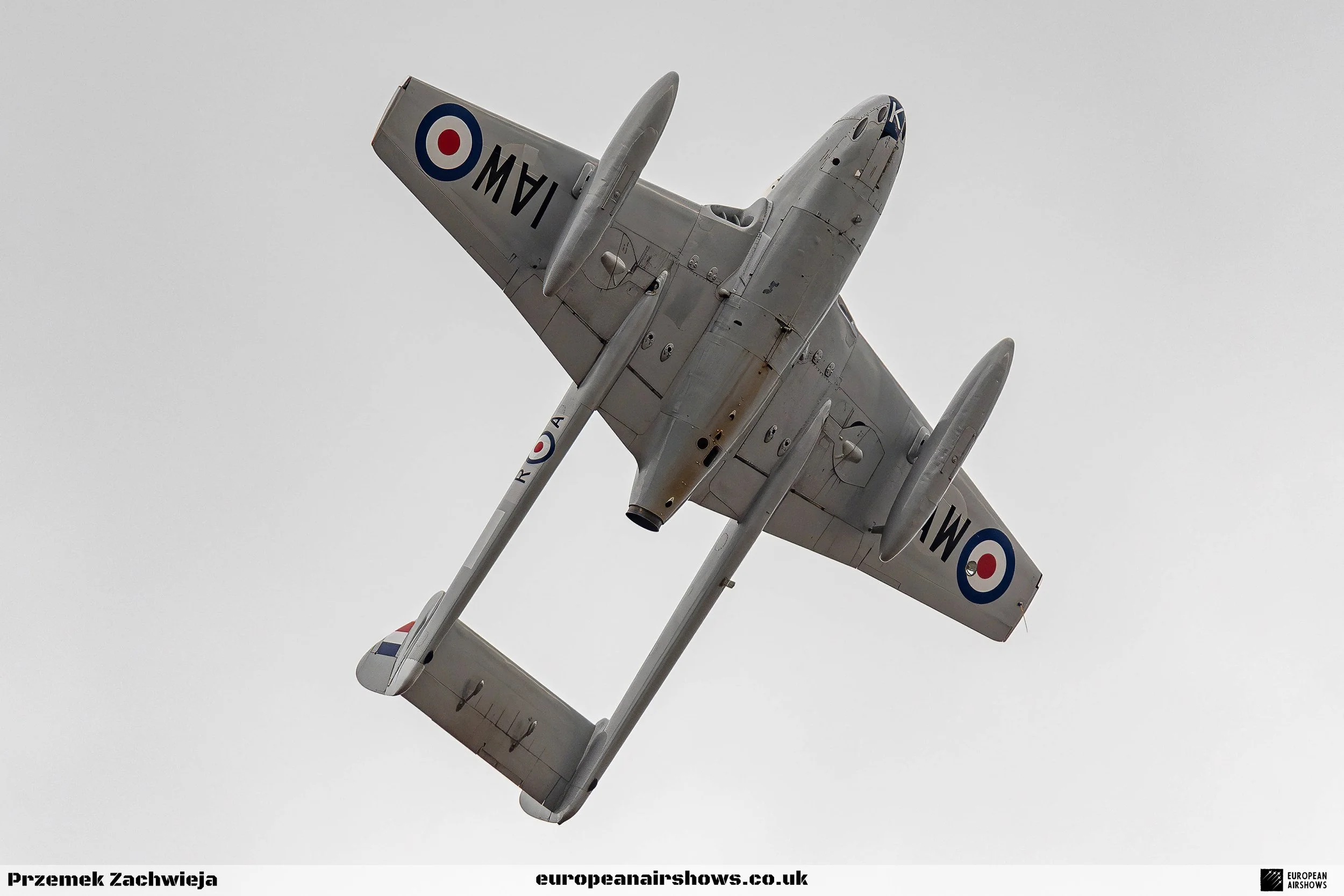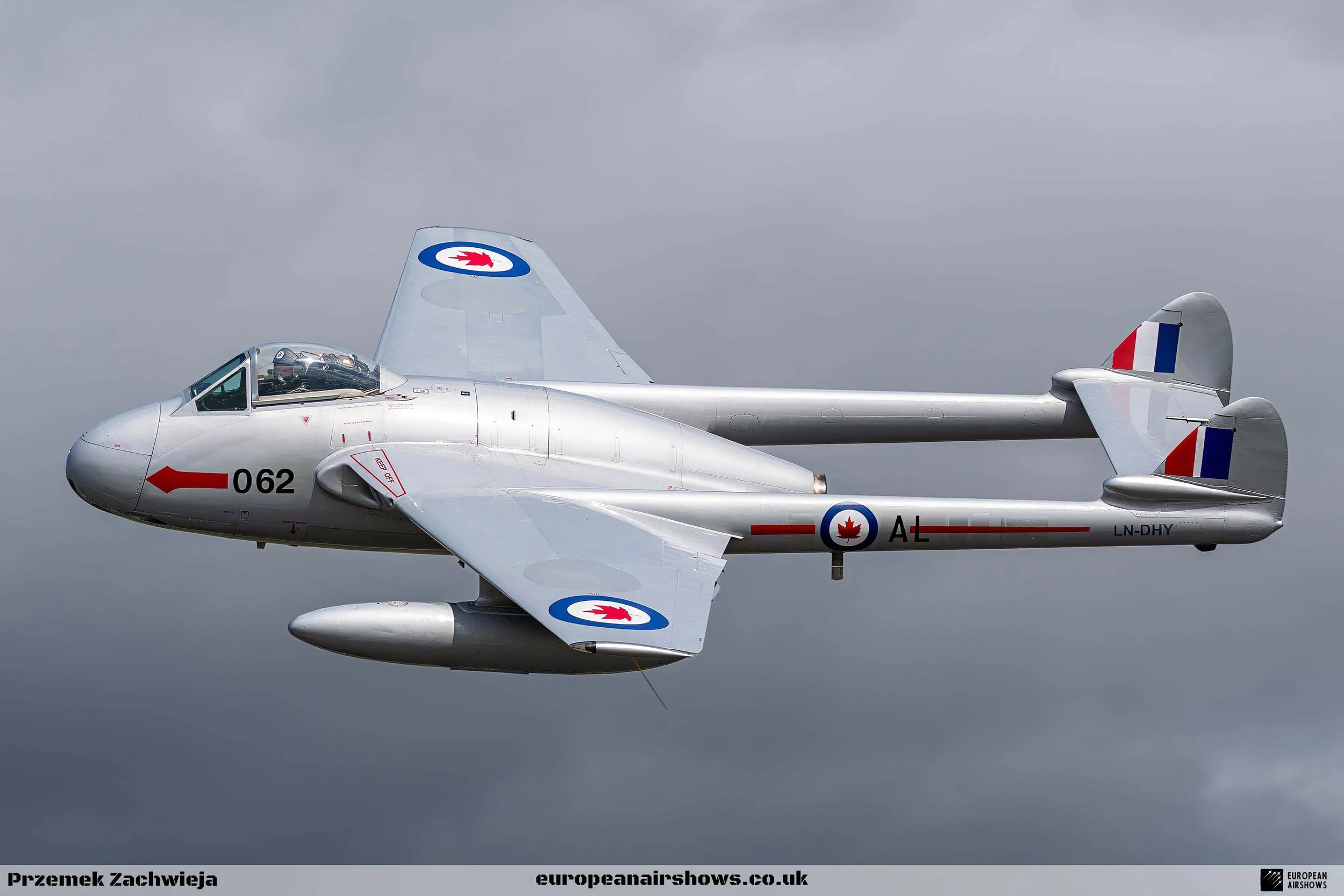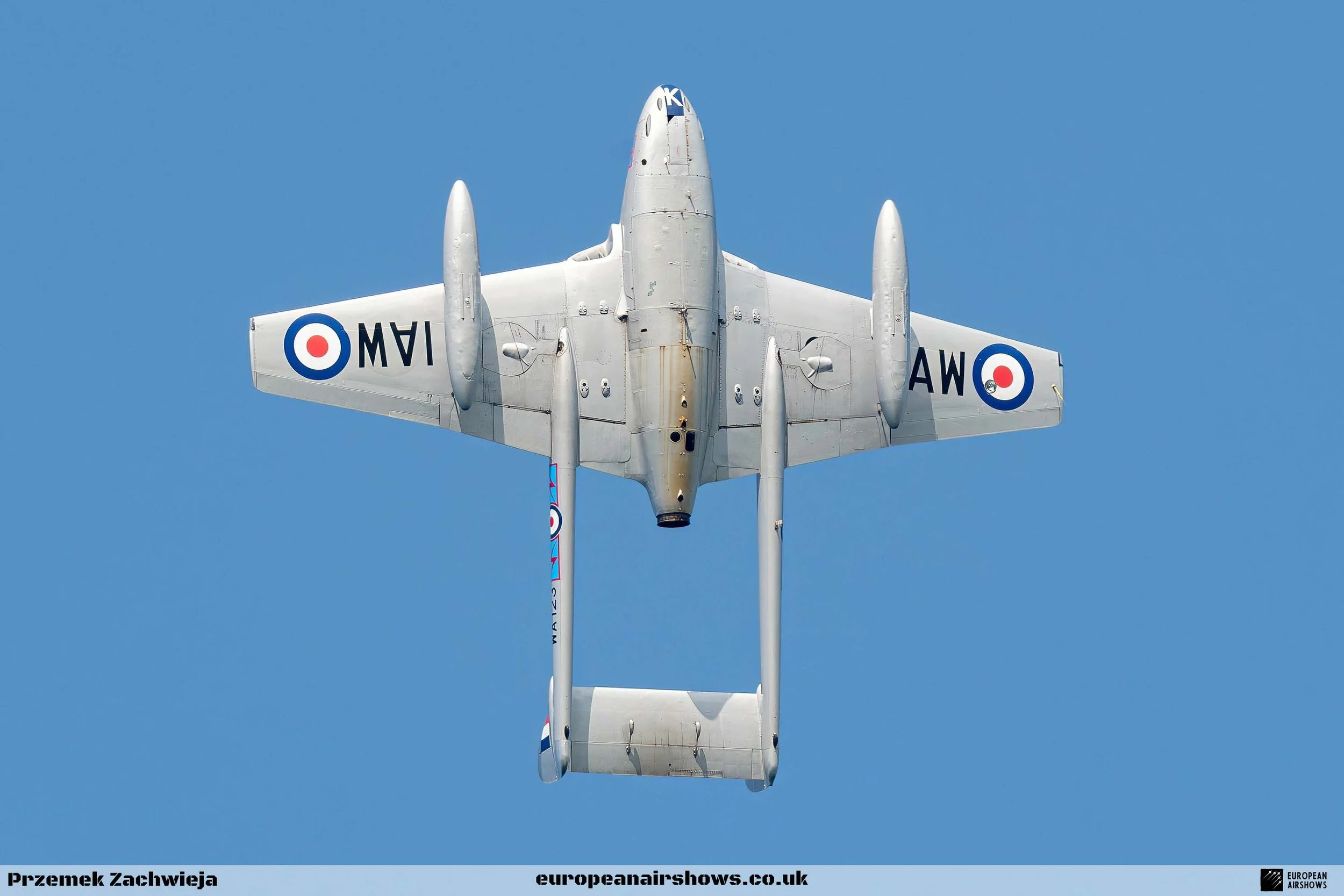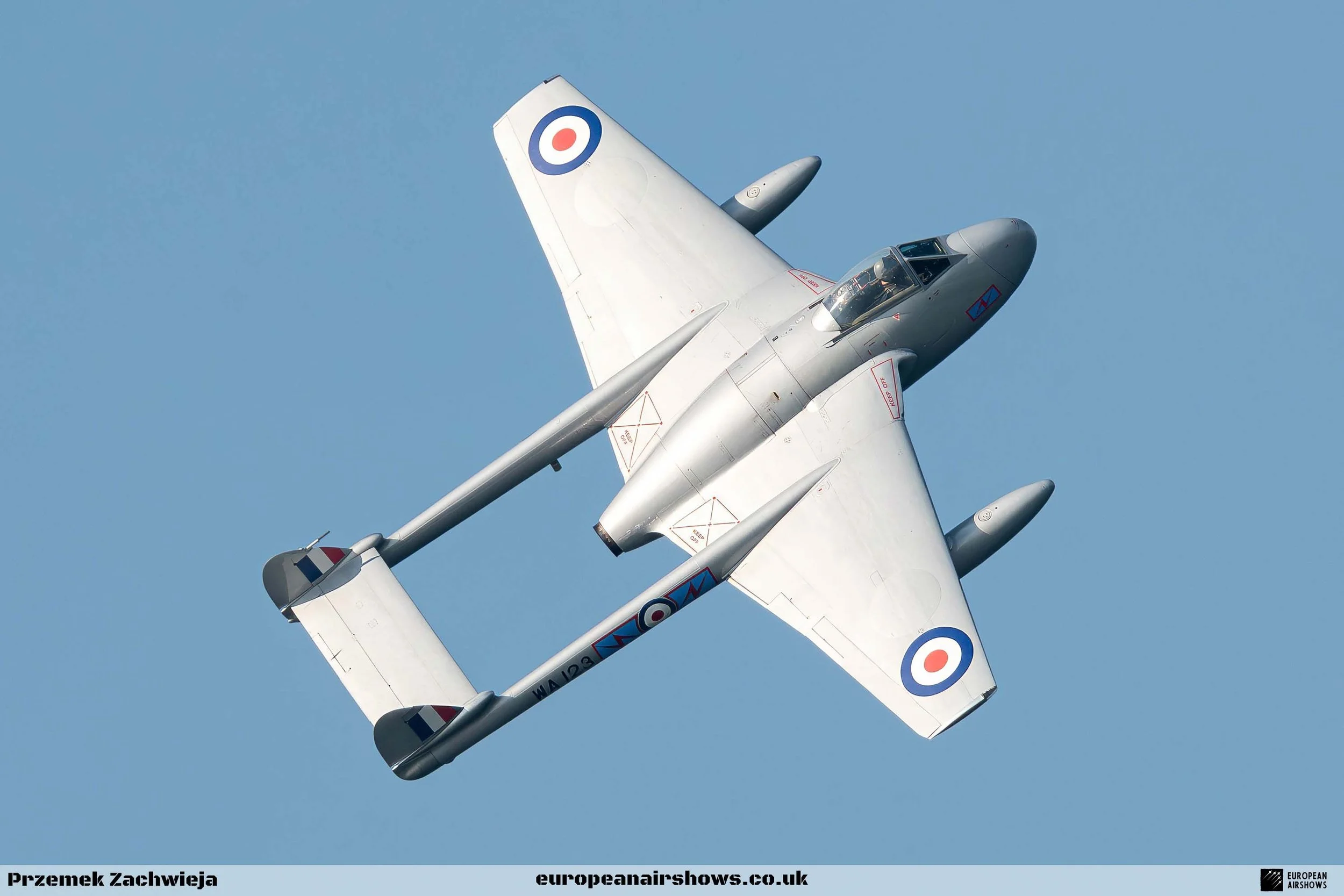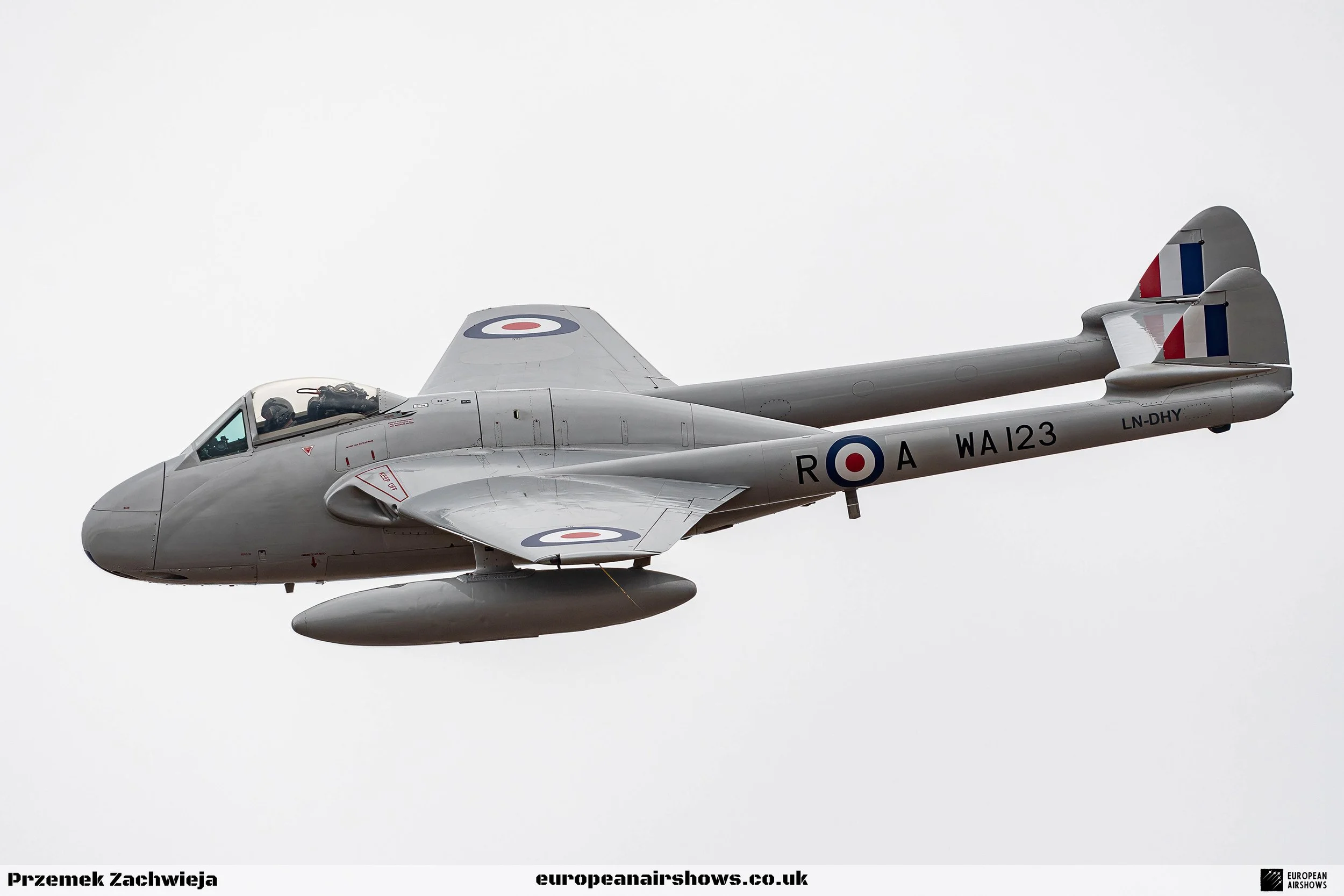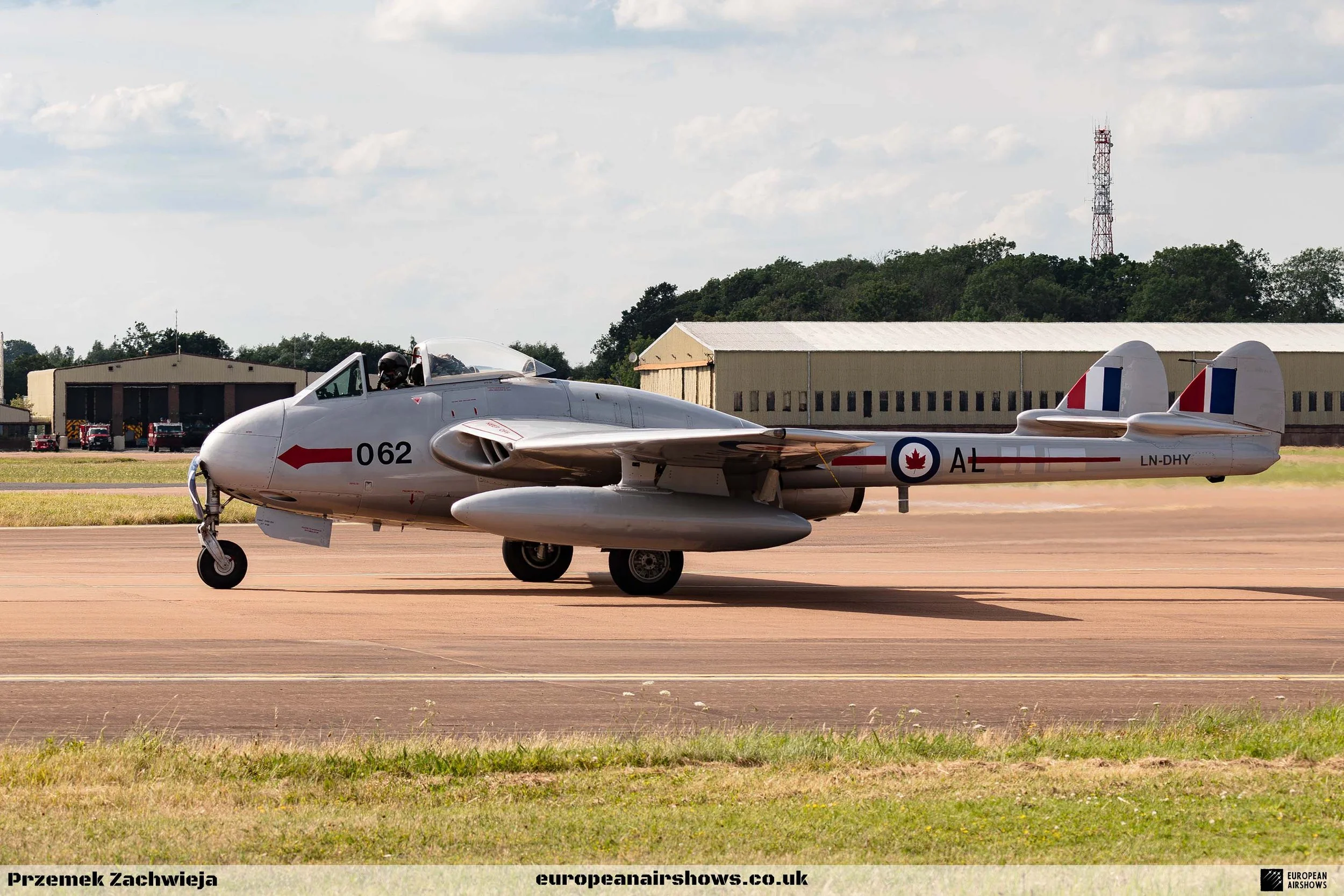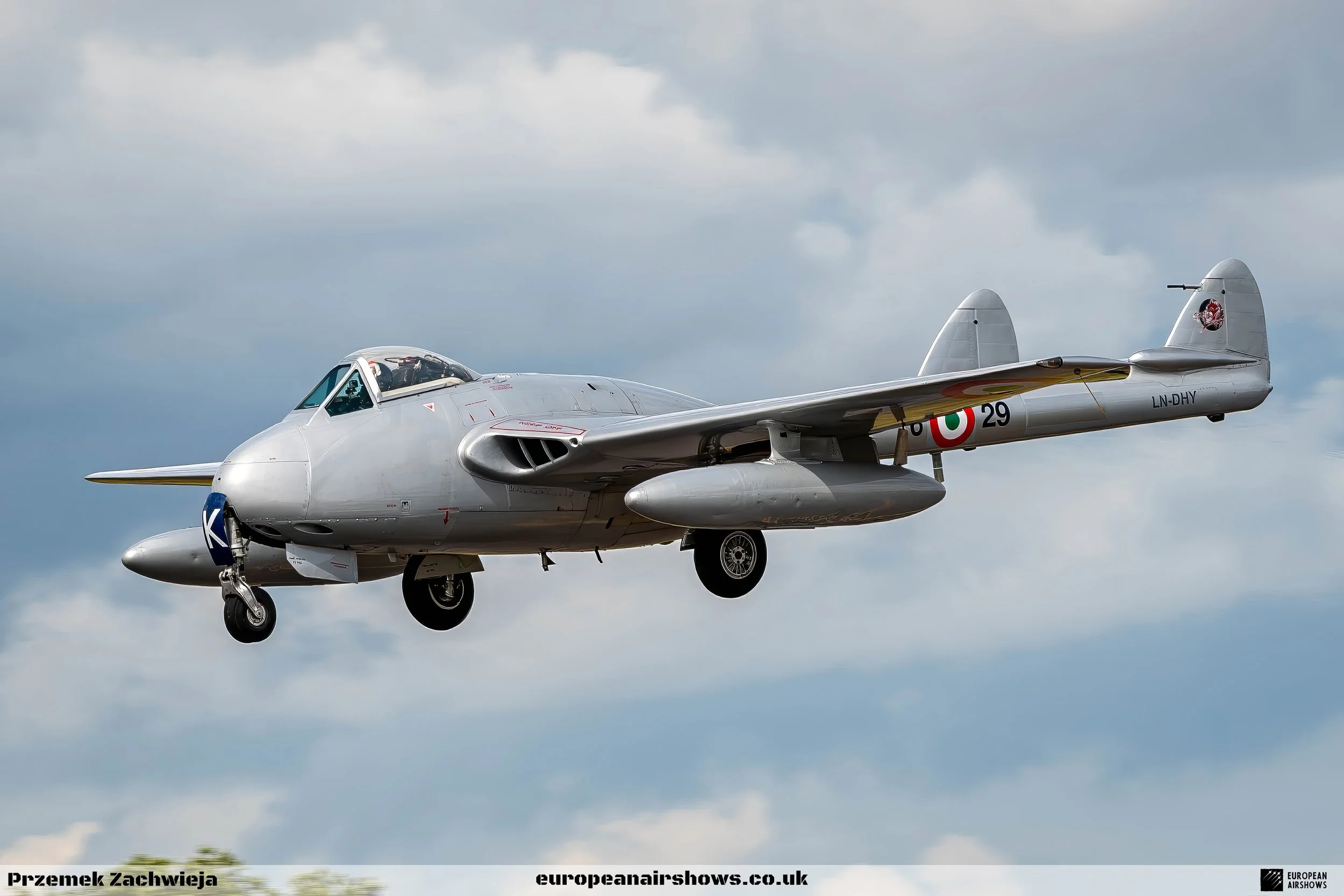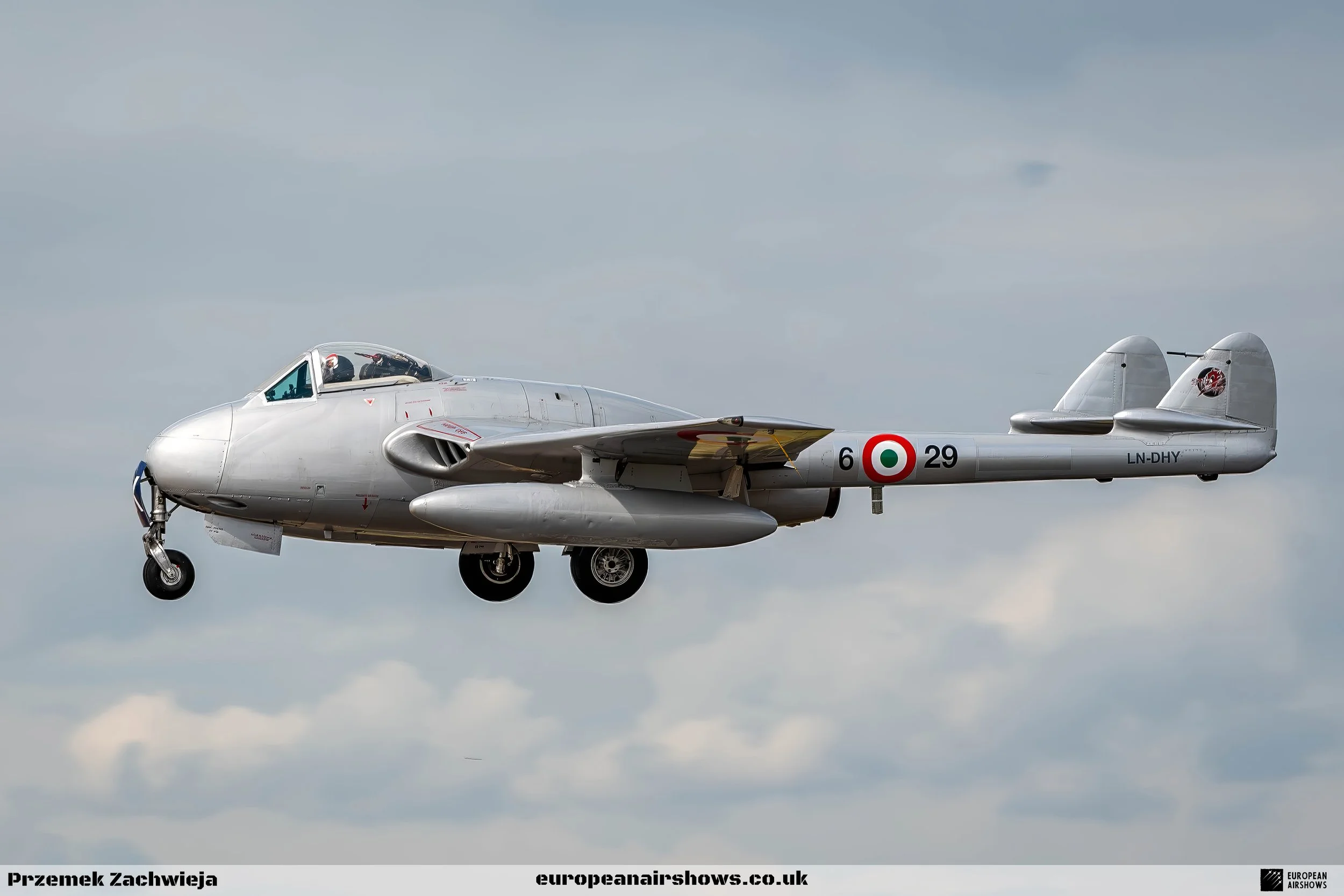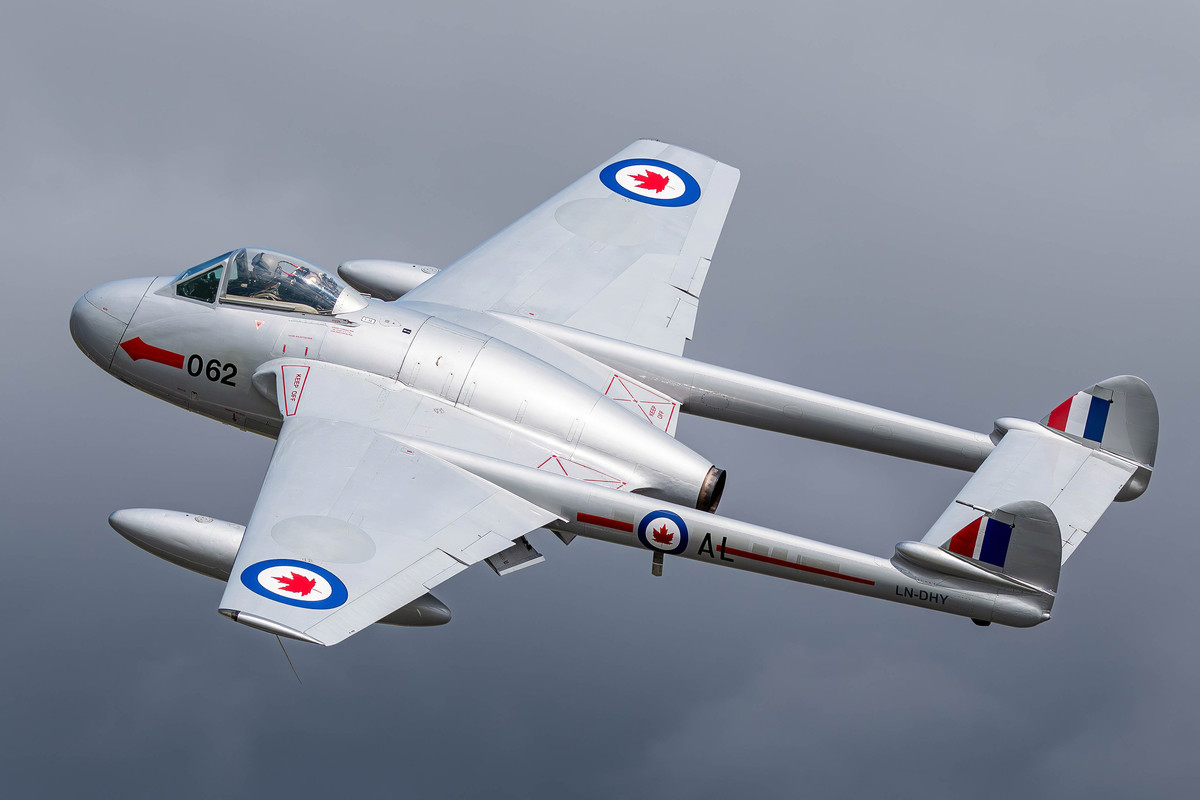
de Havilland Vampire LN-DHY
About the Aircraft
The de Havilland DH100 Vampire, introduced in the mid-1940s, was one of the United Kingdom’s first jet fighters and the RAF’s second operational jet aircraft after the Gloster Meteor. Conceived in 1941 during World War II, the Vampire was designed to exploit the emerging technology of jet propulsion, utilizing a single Halford H.1 (later Goblin) turbojet engine housed within a distinctive twin-boom configuration. Its development was spearheaded by the de Havilland Aircraft Company, which leveraged its expertise in both wood and metal aircraft construction. The Vampire made its maiden flight on September 20, 1943, and entered service with the Royal Air Force in 1946, swiftly replacing many piston-engined fighters due to its superior speed and performance. The aircraft set several aviation milestones, including being the first jet to cross the Atlantic Ocean and the first pure-jet aircraft to operate from an aircraft carrier.
Throughout its operational history, the Vampire proved to be a versatile and reliable platform, adapted into numerous variants to fulfill roles ranging from interceptor and ground-attack missions to advanced pilot training. Its adaptability facilitated widespread export, with nearly 3,300 units manufactured and serving in 31 air forces worldwide. Notable versions included the Sea Vampire for naval operations, the FB.5 fighter-bomber, and the DH.115 Vampire trainer. The Vampire saw combat in various conflicts such as the Suez Crisis, the Malayan Emergency, and the Rhodesian Bush War, demonstrating its effectiveness in diverse environments. Production continued until the mid-1960s, when advancements in jet technology and the introduction of more sophisticated aircraft led to its retirement. The Vampire’s enduring legacy lies in its role in transitioning air forces from piston-engined fighters to the jet age, cementing its place as a significant milestone in military aviation history.
Specifications
Crew
1
Length
30 ft 9 in (9.37 m)
Wingspan
38 ft (11.58 m)
Height
8 ft 10 in (2.69 m)
Max Speed
476 kn (548 mph, 882 km/h)
Range
1,058 nmi (1,220 mi, 1,960 km)
Service Ceiling
42,800 ft (13,045 m)
g limits
+6 to -3
Vampire FB.52
The de Havilland FB.52 was an export variant of the Vampire fighter-bomber, specifically the FB.6 model, designed to meet the needs of foreign air forces. Developed in the post-World War II era, the FB.52 was part of the broader Vampire family, which included various configurations for both combat and training roles. The FB.52 was powered by the de Havilland Goblin 3 turbojet engine, capable of generating approximately 3,350 lbf of thrust. This variant maintained the aircraft’s distinctive twin-boom design and was equipped with a conventional mid-mounted wing arrangement. The FB.52 was armed with four 20 mm Hispano Mk V cannons and had the capability to carry bombs and rockets, making it a versatile platform for ground-attack missions.
A total of 546 FB.52 aircraft were built, with a significant number constructed by Hindustan Aircraft Limited in India, which highlighted the global demand for the Vampire series. The FB.52 was particularly notable for its operational use in various climates and combat scenarios, including conflicts in the Suez Crisis and the Malayan Emergency. Its design allowed for effective performance in ground-attack roles, and it was well-regarded for its maneuverability and speed. The aircraft’s operational history included service with several air forces around the world, and it contributed to the transition of many nations from piston-engine fighters to jet-powered aircraft.
As production of the Vampire series concluded, the FB.52 continued to serve in various capacities, reinforcing its legacy as a reliable and effective jet fighter-bomber. The aircraft was eventually phased out as more advanced fighters entered service, but its impact on military aviation and its role in the evolution of jet technology remained significant. The FB.52 exemplified the versatility of the Vampire design and its adaptability to different operational requirements, ensuring its place in aviation history as a key player in the early jet age.
Did You Know?
- The DH.100 Vampire was a versatile aircraft, serving as both a single-seat day fighter and a fighter-bomber, showcasing its adaptability to various military roles.
- Among the Vampire variants, the F.1 was the primary single-seat fighter version for the RAF, with 228 production aircraft built. Notably, 30 of these were later transferred to the French Air Force for familiarization.
- The FB.5 variant of the Vampire was particularly prolific, with 1,123 units constructed, including a significant number for the RAF. This model featured clipped wings and was specifically designed as a fighter-bomber.
- The Vampire’s design extended beyond the UK, with notable exports including 310 units of the FB.6 to Sweden, known as the J 28B, which were later relegated to an attack role.
- The NF.10 Vampire was a two-seat night fighter version, with 81 units built for the RAF. It was later exported, with countries like Italy and India acquiring refurbished models for their air forces.
Test Your Knowledge
Performer Information
The de Havilland Vampire FB.52 is a standout performer in the fleet of the Norwegian Historical Squadron, an organization dedicated to the preservation and presentation of historical military aircraft. This iconic jet typically captivates audiences with its solo displays, showcasing its remarkable agility and performance capabilities. Occasionally, it participates in formation displays alongside the squadron's Vampire T.55, it is a rare treat to see two Vampires flying together
With a storied history of operating vintage aircraft, the Norwegian Historical Squadron plays a vital role in educating the public about aviation history while delivering exhilarating aerial performances at airshows and events across Norway and beyond. The Vampire FB.52 is a key asset in their collection, ensuring that the legacy of early jet aviation is kept alive.
This particular Vampire, registered as LN-DHY, was originally license-built in Switzerland in 1952, bearing the serial number 705. It served with the Swiss Air Force as J-1196 until 1990, before transitioning to a French owner for a brief period. In May 2011, the aircraft was acquired from Sweden, where it was previously owned by Christer Andskär, and is now operated by the Flyvåpnets Historiske Skvadron, based at Rygge Air Base near Oslo.
Typically adorned in the markings of the Royal Norwegian Air Force, representing Vampire PX-K from the 336 Squadron—Norway’s first pure jet fighter squadron active in the early 1950s—the Vampire FB.52 occasionally dons various liveries to commemorate significant anniversaries. It has proudly flown in colors representing the RAF, Italian Air Force, and Canadian Air Force, adding to its rich and diverse history.

